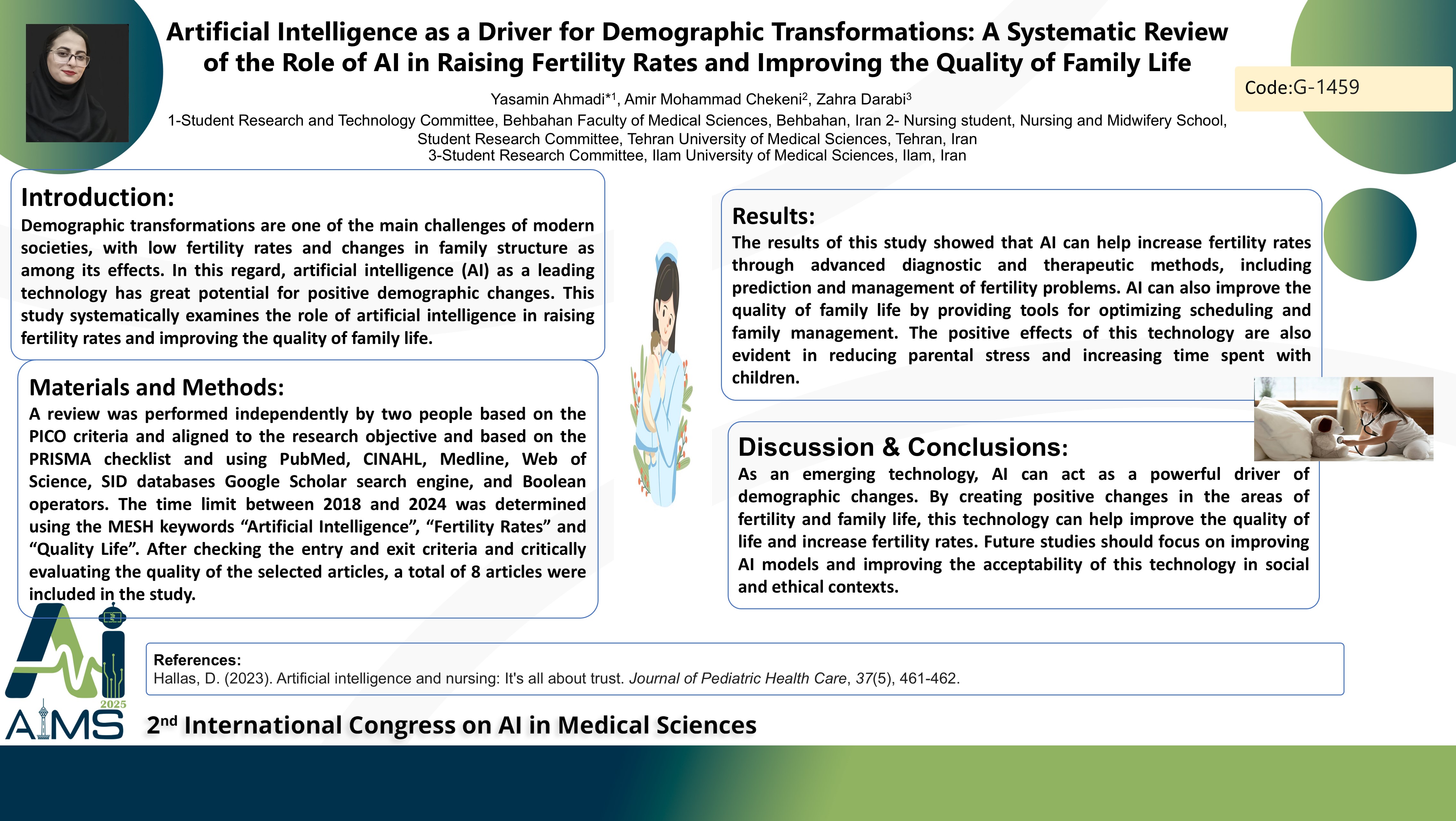هوش مصنوعی به عنوان محرکی برای تحولات جمعیتی: بررسی سیستماتیک نقش هوش مصنوعی در ارتقای نرخ باروری و بهبود کیفیت زندگی خانوادگی
کد: G-1459
نویسندگان: Yasamin Ahmadi * ℗, Amir Mohammad Chekeni, Zahra Darabi
زمان بندی: زمان بندی نشده!
برچسب: سیاست گذاری، قانون گذاری و مدیریت سلامت در حوزه هوش مصنوعی
دانلود: دانلود پوستر
خلاصه مقاله:
خلاصه مقاله
Introduction: Demographic transformations are one of the main challenges of modern societies, with low fertility rates and changes in family structure as among its effects. In this regard, artificial intelligence (AI) as a leading technology has great potential for positive demographic changes. This study systematically examines the role of artificial intelligence in raising fertility rates and improving the quality of family life. Methods: A review was performed independently by two people based on the PICO criteria and aligned to the research objective and based on the PRISMA checklist and using PubMed, CINAHL, Medline, Web of Science, SID databases Google Scholar search engine, and Boolean operators. The time limit between 2018 and 2024 was determined using the MESH keywords “Artificial Intelligence”, “Fertility Rates” and “Quality Life”. After checking the entry and exit criteria and critically evaluating the quality of the selected articles, a total of 8 articles were included in the study. Results: The results of this study showed that AI can help increase fertility rates through advanced diagnostic and therapeutic methods, including prediction and management of fertility problems. AI can also improve the quality of family life by providing tools for optimizing scheduling and family management. The positive effects of this technology are also evident in reducing parental stress and increasing time spent with children. Conclusion: As an emerging technology, AI can act as a powerful driver of demographic changes. By creating positive changes in the areas of fertility and family life, this technology can help improve the quality of life and increase fertility rates. Future studies should focus on improving AI models and improving the acceptability of this technology in social and ethical contexts.
کلمات کلیدی
Quality Life, Artificial Intelligence, Fertility Rates
